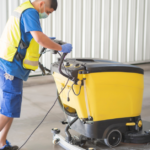Introduction
Household pests can cause significant discomfort, damage, and health risks in our homes. Understanding the behavior of these pests is crucial for effective control and prevention. By learning about their habits, signs of infestation, and control measures, homeowners can better protect their living spaces from these unwelcome intruders, according to Lyon Property Management company.
This article delves into the behavior and control of common household pests, including rodents, insects, and termites. We will explore the characteristics of these pests, how to identify their presence, and effective strategies to manage and prevent infestations. This knowledge empowers homeowners to maintain a safe and comfortable environment.
Types of Common Household Pests
Household pests come in various forms, each with unique behaviors and challenges. Understanding the specific characteristics of these pests can help in effectively managing them.
Rodents
Rodents, such as mice and rats, are common household pests that can cause significant damage and pose health risks. They are known for their ability to gnaw through various materials, including wood, plastic, and even electrical wiring, which can lead to structural damage and fire hazards.
- Behavior: Rodents are nocturnal and tend to be active at night. They have a keen sense of smell and taste, which they use to locate food. Rodents are social animals and often live in nests or burrows.
- Signs of Infestation: Droppings, gnaw marks, tracks, nesting materials, and the presence of live or dead rodents.
- Control Measures: Seal entry points, maintain cleanliness, use traps or bait stations, and employ professional pest control services Orange, CA if necessary.
Insects
Insects are a diverse group of pests that can invade homes, each with distinct behaviors and control methods. Some of the most common household insects include ants, cockroaches, and bedbugs.
- Ants: Ants are social insects that live in colonies and can be found indoors searching for food. They are attracted to sweet and greasy substances and can contaminate food sources.
- Behavior: Ants communicate through pheromones and work collectively to find food and build nests.
- Signs of Infestation: Visible trails of ants, especially near food sources, and small piles of soil or debris near nesting sites.
- Control Measures: Keep food sealed, clean spills immediately, use ant baits, and locate and eliminate nests.
- Cockroaches: Cockroaches are nocturnal insects that prefer warm, moist environments. They can carry diseases and trigger allergies.
- Behavior: Cockroaches are scavengers and can eat almost anything, including food scraps, glue, and paper.
- Signs of Infestation: Droppings, shed skins, egg cases, and a musty odor.
- Control Measures: Maintain cleanliness, fix leaks, use bait stations or insecticides, and employ professional pest control services if needed.
- Bedbugs: Bedbugs are small, reddish-brown insects that feed on human blood. They are nocturnal and hide in cracks and crevices during the day.
- Behavior: Bedbugs are attracted to body heat and carbon dioxide. They often hide in mattresses, bed frames, and furniture.
- Signs of Infestation: Bites on the skin, blood stains on sheets, and small dark spots (feces) on bedding and furniture.
- Control Measures: Wash and heat-treat bedding, vacuum regularly, use mattress encasements, and seek professional pest control assistance.
Termites
Termites are wood-destroying insects that can cause significant structural damage to homes. They are often referred to as “silent destroyers” because they can go undetected for long periods.
- Behavior: Termites live in colonies and feed on cellulose, which is found in wood and other plant materials. They build mud tubes to travel between their nest and food sources.
- Signs of Infestation: Mud tubes on walls or foundations, discarded wings, hollow-sounding wood, and visible damage to wood structures.
- Control Measures: Reduce moisture around the home, remove wood debris, use termite baits or barriers, and schedule regular inspections by pest control professionals.
Behavioral Patterns of Household Pests
Understanding the behavioral patterns of household pests is crucial for effective control. Each pest has unique habits and preferences that influence how they invade and inhabit homes.
Rodent Behavior
Rodents, such as mice and rats, are highly adaptable and can live in various environments. They are excellent climbers and can squeeze through small openings to enter homes. Rodents are attracted to food sources, warmth, and shelter.
- Feeding Habits: Rodents are omnivores and will eat almost anything, but they prefer grains, seeds, fruits, and vegetables. They hoard food, which can be found in hidden caches.
- Nesting Habits: Rodents build nests in secluded areas using soft materials like paper, fabric, and insulation. Common nesting sites include attics, basements, and wall voids.
- Reproduction: Rodents reproduce quickly, with females capable of producing multiple litters each year. This rapid reproduction can lead to large infestations if not controlled.
Insect Behavior
Insects exhibit a wide range of behaviors depending on the species. However, many household insects share common traits, such as their attraction to food and shelter.
- Ants: Ants are social insects that live in structured colonies with a clear division of labor. They have worker ants that forage for food and queen ants that reproduce.
- Cockroaches: Cockroaches are highly resilient and can survive in harsh conditions. They are attracted to warmth, moisture, and food scraps. Cockroaches are nocturnal and hide during the day.
- Bedbugs: Bedbugs are nocturnal and feed on human blood while their hosts sleep. They hide in cracks and crevices during the day and can spread quickly by hitchhiking on luggage, furniture, and clothing.
Termite Behavior
Termites are social insects that live in colonies with distinct castes, including workers, soldiers, and reproductive individuals. They are highly organized and efficient at locating and consuming wood.
- Feeding Habits: Termites feed on cellulose, which is found in wood and plant materials. They can digest cellulose with the help of symbiotic microorganisms in their guts.
- Nesting Habits: Termites build elaborate nests, often underground or within the wood they are infesting. Subterranean termites construct mud tubes to travel between their nest and food sources.
- Reproduction: Termite colonies can produce thousands of individuals. Winged reproductives, called swarmers, leave the colony to establish new colonies, usually during specific seasons.
Signs of Infestation
Recognizing the signs of pest infestations is essential for early detection and effective control. Each type of pest leaves distinct clues that can indicate their presence.
Rodents
- Droppings: Rodent droppings are small, dark, and pellet-shaped. Finding droppings in kitchens, pantries, or along walls is a common sign of infestation.
- Gnaw Marks: Rodents gnaw on various materials, leaving behind chew marks. Look for gnaw marks on food packaging, baseboards, and electrical wiring.
- Nesting Materials: Rodents use soft materials like paper, fabric, and insulation to build nests. Finding shredded materials in hidden areas can indicate nesting activity.
- Tracks and Grease Marks: Rodents leave tracks and greasy marks along their regular pathways. These marks can be visible on walls, floors, and baseboards.
Insects
- Ant Trails: Ants leave visible trails as they forage for food. These trails can be found along baseboards, countertops, and outside near entry points.
- Cockroach Droppings: Cockroach droppings are small, dark, and cylindrical. They can be found in kitchens, bathrooms, and other areas with food and moisture.
- Bedbug Evidence: Bedbug infestations can be identified by bites on the skin, blood stains on sheets, and small dark spots (feces) on bedding and furniture.
- Shed Skins and Egg Cases: Finding shed skins or egg cases can indicate an insect infestation. This is common with cockroaches and bedbugs.
Termites
- Mud Tubes: Termites build mud tubes to travel between their nest and food sources. These tubes can be found on walls, foundations, and other structures.
- Discarded Wings: Swarming termites shed their wings after mating. Finding discarded wings near windowsills or entry points can indicate a termite infestation.
- Hollow-Sounding Wood: Termites consume wood from the inside out, leaving a thin outer layer. Tapping on infested wood and hearing a hollow sound can indicate termite activity.
- Visible Damage: Termite damage can appear as blistering, sagging, or weakened wood. Look for signs of damage on wooden structures, furniture, and flooring.
Effective Control Measures
Controlling household pests requires a combination of prevention, monitoring, and targeted treatments. Effective pest management involves using various strategies tailored to the specific pests and the severity of the infestation.
Rodent Control
- Seal Entry Points: Inspect the home for gaps, cracks, and openings that rodents can use to enter. Seal these entry points with materials like steel wool, caulk, or metal mesh.
- Maintain Cleanliness: Keep the home clean and free of food debris. Store food in airtight containers and dispose of garbage regularly.
- Use Traps and Bait Stations: Set up traps and bait stations in areas where rodents are active. Use snap traps, live traps, or bait stations to capture or eliminate rodents.
- Professional Pest Control: For severe infestations, consider hiring a professional pest control service. They can provide targeted treatments and ongoing monitoring to ensure effective control.
Insect Control
- Ant Control: To control ants, locate and eliminate their nests. Use ant baits to attract and poison foraging ants, which will then carry the poison back to the nest. Maintain cleanliness to reduce attractants.
- Cockroach Control: Cockroach control involves maintaining cleanliness, fixing leaks, and using bait stations or insecticides. Target areas where cockroaches hide, such as kitchens and bathrooms.
- Bedbug Control: To control bedbugs, wash and heat-treat bedding and clothing. Vacuum regularly and use mattress encasements to prevent bedbugs from hiding. In severe cases, seek professional pest control assistance.
Termite Control
- Reduce Moisture: Termites are attracted to moisture. Reduce moisture around the home by fixing leaks, ensuring proper drainage, and using dehumidifiers.
- Remove Wood Debris: Remove wood debris, such as firewood and lumber, from around the home. Store wood off the ground and away from the house.
- Use Termite Baits and Barriers: Set up termite bait stations and barriers to detect and eliminate termites. These methods can help prevent termites from infesting the home.
- Regular Inspections: Schedule regular inspections by a professional pest control service. Early detection and treatment are crucial for effective termite control.
Conclusion
Understanding the behavior and control of common household pests is essential for maintaining a safe and comfortable living environment. By learning about the habits and signs of rodents, insects, and termites, homeowners can take proactive measures to prevent and manage infestations.
Effective pest control involves a combination of strategies, including prevention, monitoring, and targeted treatments. By sealing entry points, maintaining cleanliness, using traps and baits, and seeking professional assistance when necessary, homeowners can protect their homes from the damage and health risks associated with pests.
Adopting eco-friendly pest control methods can further enhance the effectiveness of pest management while minimizing environmental impact. Whether dealing with rodents, ants, cockroaches, bedbugs, or termites, a comprehensive understanding of pest behavior and control measures is key to achieving a pest-free home.


